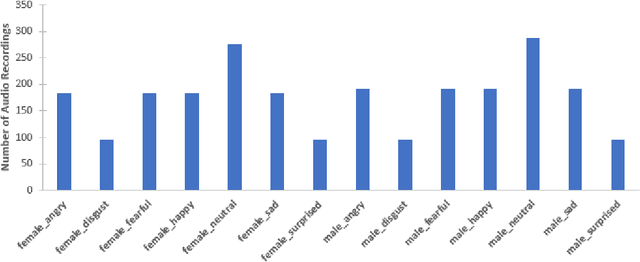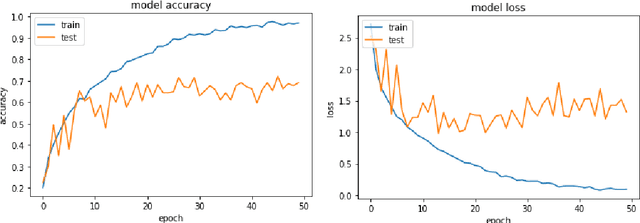Emotion Recognition from Speech
Paper and Code
Dec 22, 2019



In this work, we conduct an extensive comparison of various approaches to speech based emotion recognition systems. The analyses were carried out on audio recordings from Ryerson Audio-Visual Database of Emotional Speech and Song (RAVDESS). After pre-processing the raw audio files, features such as Log-Mel Spectrogram, Mel-Frequency Cepstral Coefficients (MFCCs), pitch and energy were considered. The significance of these features for emotion classification was compared by applying methods such as Long Short Term Memory (LSTM), Convolutional Neural Networks (CNNs), Hidden Markov Models (HMMs) and Deep Neural Networks (DNNs). On the 14-class (2 genders x 7 emotions) classification task, an accuracy of 68% was achieved with a 4-layer 2 dimensional CNN using the Log-Mel Spectrogram features. We also observe that, in emotion recognition, the choice of audio features impacts the results much more than the model complexity.
 Add to Chrome
Add to Chrome Add to Firefox
Add to Firefox Add to Edge
Add to Edge